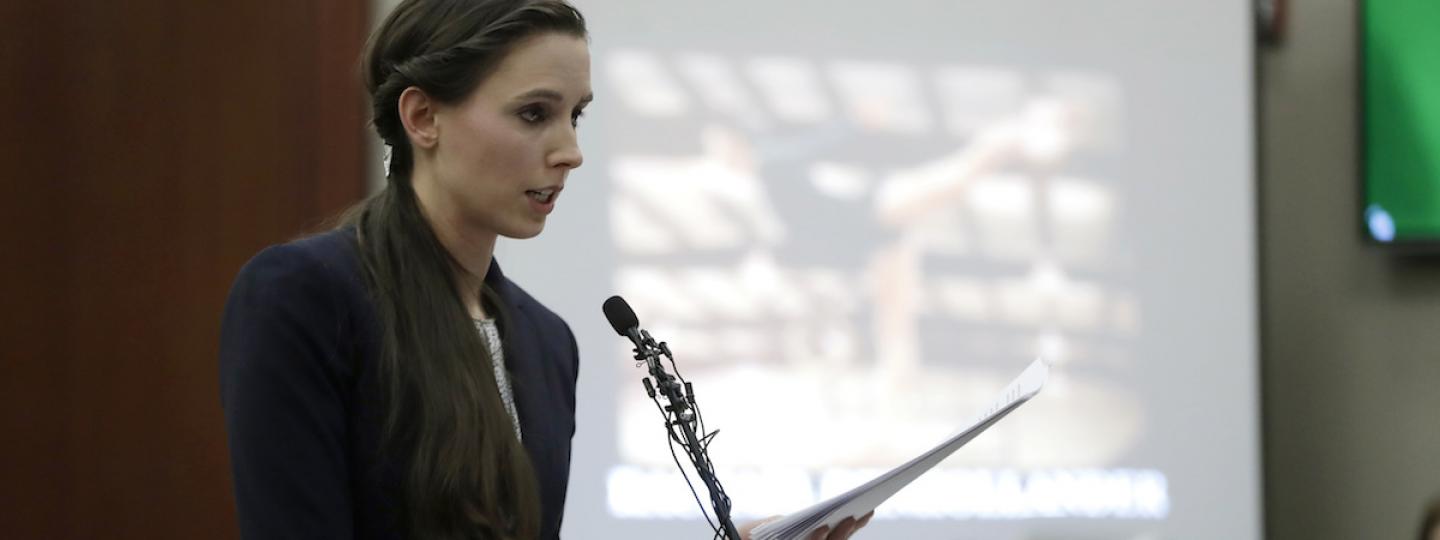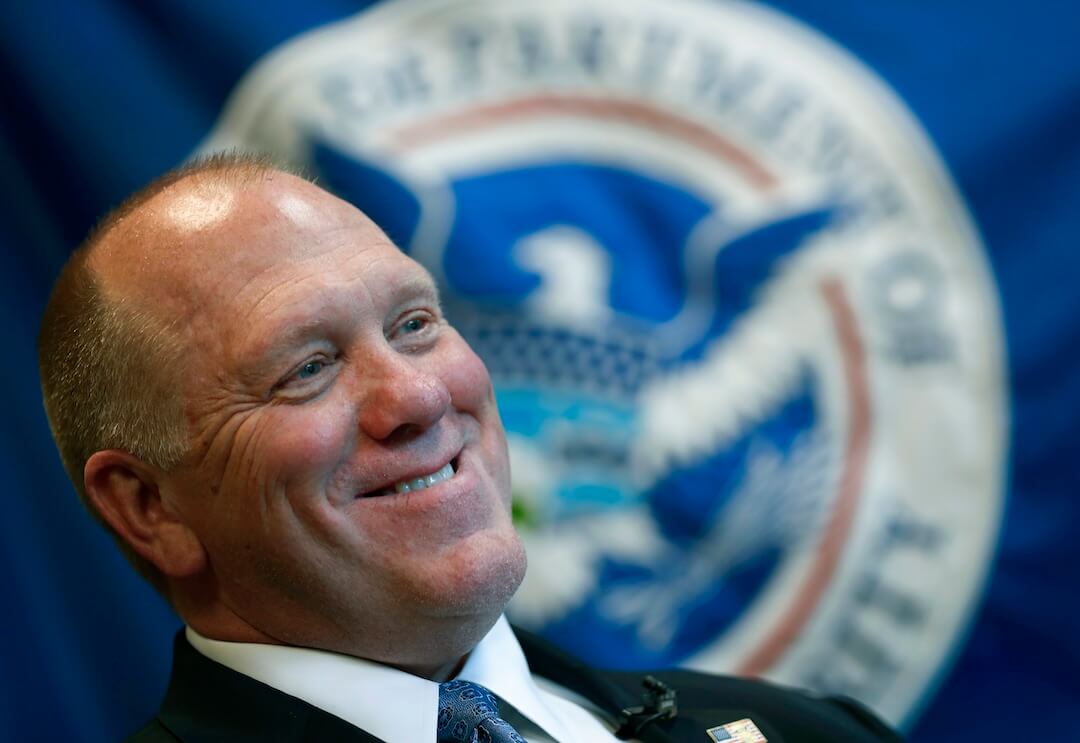The Daily podcast did this very clever thing with the audio from the women and girls who testified during the sentencing of Dr. Larry Nassar last week. You hear the voices singularly at first, speaking in clear, declarative sentences. Then you hear snippets from one gymnast, then another, in a staccato sequence. Then you hear the voices as a chorus, saying different words to the same effect, a cacophony of young women, telling their stories.
I’ve encouraged innovative storytelling around the issue of rape and sexual assault as long as I’ve worked at Poynter. And I found the technique stunning. For too long, we’ve failed as journalists to listen to victims of sexual assault and let them tell their stories. This moment presents an opportunity to change our approach.
First, we should acknowledge where we are and where we’ve been. Here’s an abbreviated history of how the media has covered sexual assault:
- Pre-1950s. Most of the stories that appear in newspapers about sexual assault involve cases where the accused was black and the victim was white. The victim is often named. The accused is often lynched. In many of these cases, it’s clear that no assault actually took place. These stories are not really about sexual assault at all, but usually about perpetuating stereotypes of race.
- 1970s. Under pressure from feminists, editors at American newspapers adopt policies that prohibit the naming of rape victims in criminal cases. In doing so, editors and law enforcement acknowledge that crimes of rape and sexual assault are under-reported to police because of the shame and stigma associated with the crime.
- 1990. Under the leadership of executive editor Geneva Overholser, the Des Moines Register publishes a five-part narrative series documenting the story of Nancy Ziegenmeyer, who was raped by a stranger during a home invasion. The series wins the Pulitzer Prize for Public Service. Overholser went on to argue that until we routinely named victims of sexual assault, we would never change the stigma associated with the crime.
- Mid 2000s. After a series of kidnappings in which the names and photos of victims were widely published in hopes of rescuing them, the media must wrestle with the question of whether they should stop naming a victim if it is later discovered she was raped. (Yes, you should, most news outlets decide.)
- 2011. The Patriot-News in Harrisburg, Pennsylvania, begins publishing stories about an investigation into Penn State assistant coach Jerry Sandusky. He is indicted later that year for assaulting young boys, and the newspaper wins a Pulitzer Prize for local reporting. For the most part, the victims remained anonymous in news stories.
- 2014. Dozens of women accuse actor Bill Cosby of sexual assault and agree to be named in various news outlets, including the cover of New York Magazine.
- 2017. Dozens of women accuse Hollywood mogul Harvey Weinstein of sexual harassment and in some cases sexual assault. Many agree to be named.
- 2017. The #MeToo movement takes root, and workplaces across the country investigate a plague of sexual harassment that sometimes includes sexual assault.
- 2018. More than 150 victims, most of them accomplished gymnasts, testify at the sentencing of Nassar, who worked for Michigan State University and USA Gymnastics. Most of them agree to be named. Some of them are famous Olympic athletes.
Current-day practice at most newsrooms doesn’t match the guidance in most written policies.
Those policies — and I know because I’ve written and consulted on many of them — often look like they did back in 1975: Because of the stigma associated with sexual assault, we do not publish the names of victims. Some of the more enlightened policies add: against their will. And the best policies include encouragement for journalists to seek out the voices of sexual assault victims in order to tell their stories.
I’m not suggesting we in journalism should start naming victims of sexual assault without their permission. But we should rewrite our policies to encourage journalists to tell more complete stories about sexual assault.
Many journalists are already doing this. (Example: Tyler Kingkade and dozens of his colleagues at BuzzFeed.)
Rather than starting with a policy that tells us what to avoid, what if our policies encouraged us to tell the story of sexual assault more completely, so that the public might understand how it happens and how to prevent it? Today’s policies presume that our journalistic motive for telling a sexual assault story is rooted in our urge to improve public safety. But sexual assault isn’t really a public safety problem; it’s a public health problem.
We are so close to getting it right. Most news outlets acknowledge that running briefs about who gets arrested for sexual assault does very little to improve public safety, because most sexual assaults happen in familiar settings, like your house or your school or your doctor’s office.
Telling the story from the point that a crime is reported is the approach least likely to illuminate anything. Because that’s the point that the victim is most likely to insist on anonymity.
What if our policies encouraged journalists to look for trends and hold the powerful accountable, the way the Indianapolis Star did in 2014 when they published the first stories about USA Gymnastics and their horrible track record of protecting adults who abuse children?
Here we are with an opportunity to get it right. Let’s finish the job.
Rewrite your policies about naming victims of sexual assault. Include these points:
- Because sexual assault is a public health threat, we have an obligation to cover it thoroughly.
- Because children are commonly victims of sexual assault, we should hold our schools and medical facilities and law enforcement systems accountable for their protection.
- We should give victims of sexual assault a chance to tell their stories, treating them with respect and dignity.
- We should ensure that our journalistic values of fairness and accuracy are extended to those accused of sexual assault.
We've made great progress in telling the stories of sexual assault, in spite of our inclinations in journalism to cling to our traditions. This generation coming of age seems ready to reject the stigma and shame society showers on victims of sexual assault. Give journalists the tools they need to do this story justice, so future generations have the knowledge they need to recognize and stop sexual predators.
Editor's note: Tyler Kingkade's name was spelled wrong in initial versions. It is not Kingcade.







